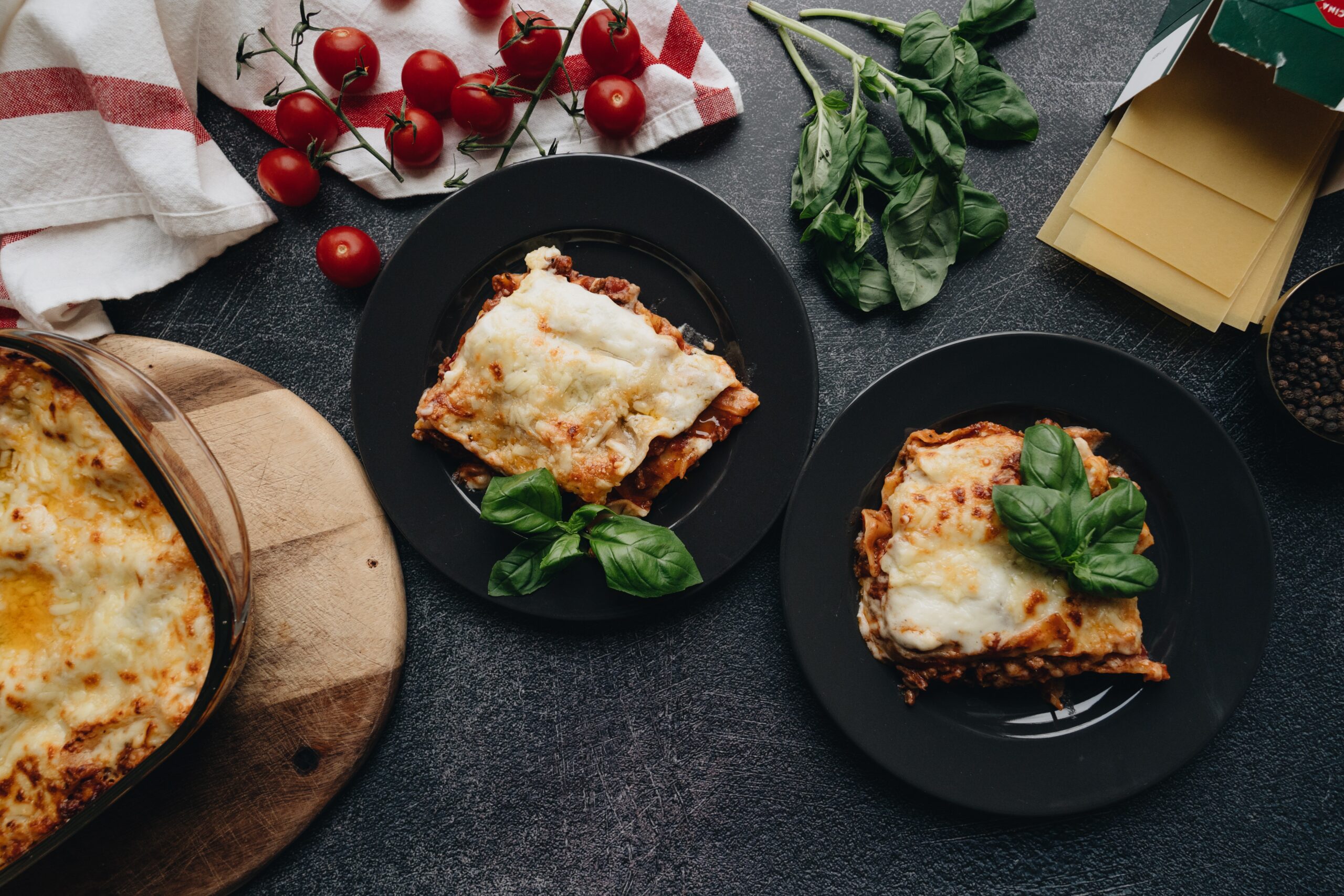Some of the links on this page are affiliate links, which means that Buzzy Kitchen earns commission from purchases made – at absolutely no extra cost to you. Thank you so much for supporting Buzzy Kitchen!
There’s something really quite lovely about pulling a bubbling, golden-brown lasagne out of the oven and serving it up at the end of a long day, especially when it’s a cold day, too. Lasagne is one of my all-time favourite winter dinner dishes, and it is highly customisable. But what is the best cheese for lasagne?
Why don’t we find out?
What Cheese is Traditionally Used in Lasagne?
If you were to travel to Naples, your lasagne would look a little different to the type of dish we would call ‘lasagne’ in the UK. Containing sausage, eggs (hard-boiled), and meatballs, the Naples pasta dish is typically topped with mozzarella and ricotta cheese and goes by the name ‘lasagne di Carnevale‘.
The type of lasagne we’re all probably used to seeing is ‘lasagne al forno,’ which is made up of pasta sheets, ragu sauce, Parmigiano-Reggiano cheese, and bechamel sauce. The ‘al forno‘ part of the recipe name means to bake.
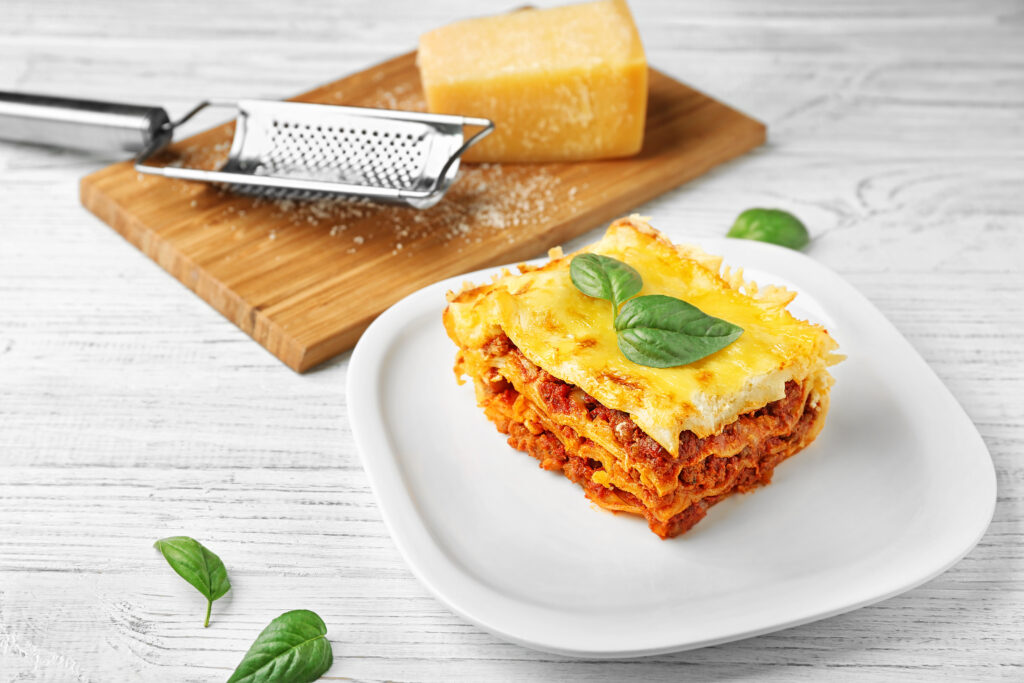
There are several other versions of the pasta dish. Although we associate it with Italian food, there are some theories that it actually originated in Greece, which would obviously change the types of cheese available and used.
What is the Best Cheese for Lasagne?
There are different kinds of lasagne, which is also known in some places of the world as lasagna. The most common type, and perhaps the typical style that we eat today, is “lasagna al forno,” which is topped up with Parmigiano-Reggiano cheese.
The best cheese for lasagne is, without a doubt, whatever your favourite melty, gooey cheese is. In all honesty, you’re going to be eating the dish, so you get to choose which cheese you put on top.
Ideally, the cheese will melt well, turn gooey when hot, and has a rich flavour that complements the lasagne and not overpower it. A few cheese types that fit the bill include:
Ricotta
This is one of the most common and traditional types of cheese to top off a lasagne, and it’s perfect for a wide range of reasons. First and foremost, it has a great creamy texture that works well with the creamy white sauce and tangy tomato-based sauce in modern-day lasagne dishes.
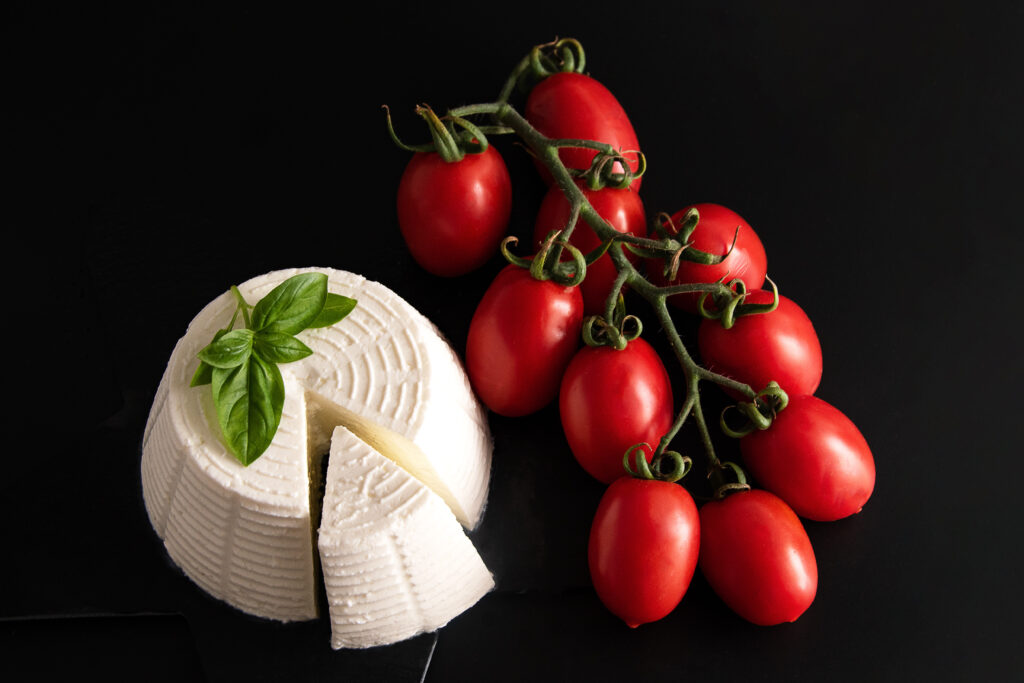
Ricotta cheese has a nice, mild flavour for those who aren’t a fan of bold cheeses. You can also opt for lower-fat versions for an even milder flavour and fewer calories.
Mozzarella
Mozzarella cheese is a great one to call on when you want to enhance and amplify the other flavours in the pasta dish. It’s well known for its ability to melt well and maintain a stringy, stretchy texture. For that reason, it’s often used as the cheese for pizza.
Without a strong or bold flavour, this soft cheese is great for when you don’t want the cheese to completely overpower the other flavours of the lasagne itself. Parmesan can do this, as can strong cheddar types.

The one thing you do need to remember with mozzarella cheese for lasagne is, it doesn’t brown like other cheeses. If you’re in the market for a crunchy topping that’s golden brown, there are other, better cheeses.
Gruyere
This popular Swiss cheese has several factors that make it great for lasagne and other pasta dishes. It has a long history in European cuisine, and it works well with other cheeses in a blend or mix, including cheddar, mozzarella, and Parmesan.
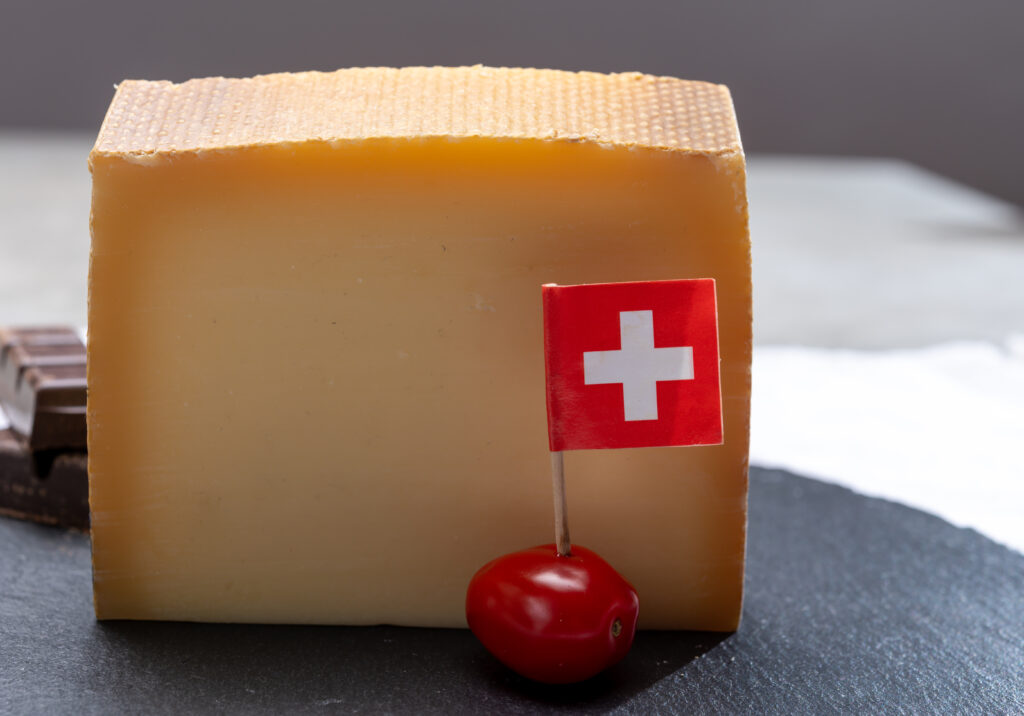
Gruyere cheese melts well and goes on to crisp up, making it a great topping for lasagne, shepherd’s pie, and more. It also has a balanced salt content, turns velvety smooth when heated, and has a nutty and rich flavour that intensifies with age.
If you want a bolder, stronger nutty gruyere flavour, use mature or longer-aged gruyere cheese.
Cheddar
With a tangy, sharp, and rich flavour, cheddar isn’t always the first choice when it comes to the best cheese for lasagne, but it certainly can add a little something extra to the meal. Obviously, the more mature the cheddar cheese, the more flavour it will bring with it.
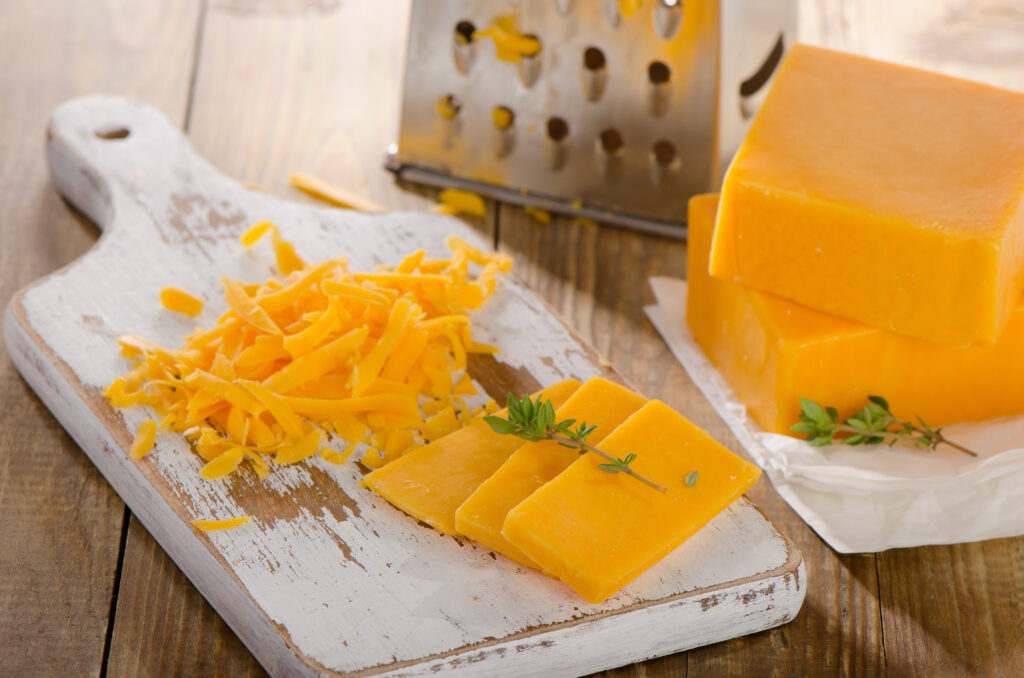
One of the best things about using cheddar in this pasta dish is the meltability factor. It melts much easier and quicker than other types of cheeses, and depending on how long you bake it for, it can either be stringy and melty, or crunchy. If it’s a crunchy crust or topping you want, cheddar cheese is the one to pick.
Romano
Romano is a lesser-used cheese when it comes to lasagne, but that doesn’t mean it can’t work. With a bold, robust, and tangy flavour, it’s perhaps too strong for some, but people with a penchant for mature, bold, and sharp infusions will likely love it. You will need to bear in mind that Romano is a saltier cheese than others. It will add to the salt-factor of the dish.
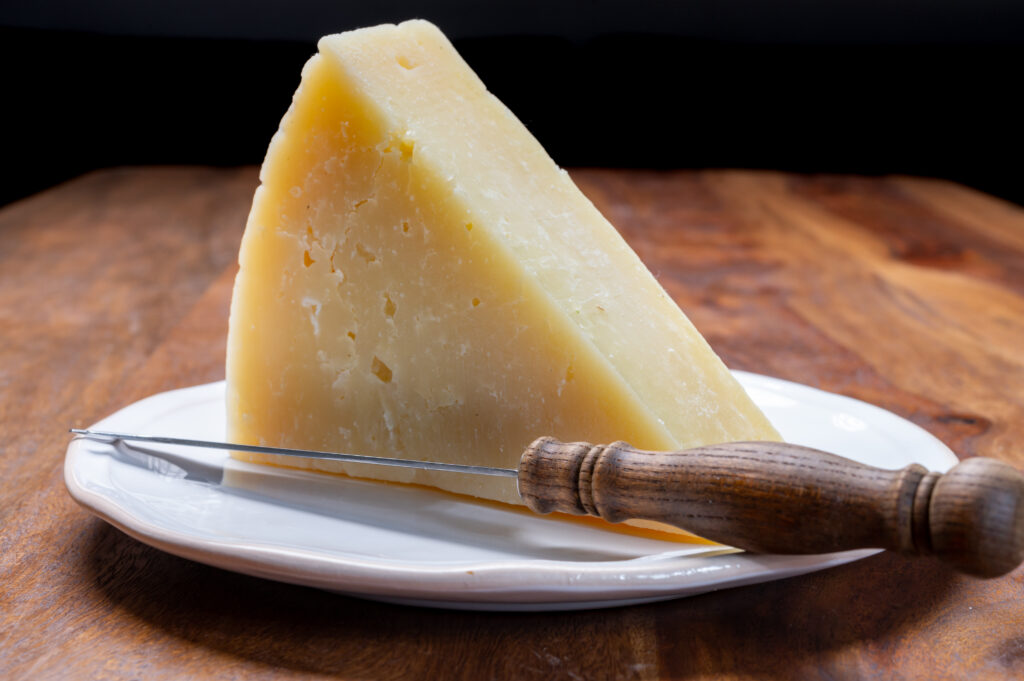
Romano cheese has a crumbly and quite hard texture but does crisp up to a wonderful golden brown when melted. Leave it for longer if you want crunch, but only leave it for a short time if you want a gooey topping.
Cottage Cheese
Often used in place of ricotta in lasagne, cottage cheese is creamy, moist, and mild-flavoured, which makes it great for dishes that have stronger, bolder flavours than your typical lasagne dish.
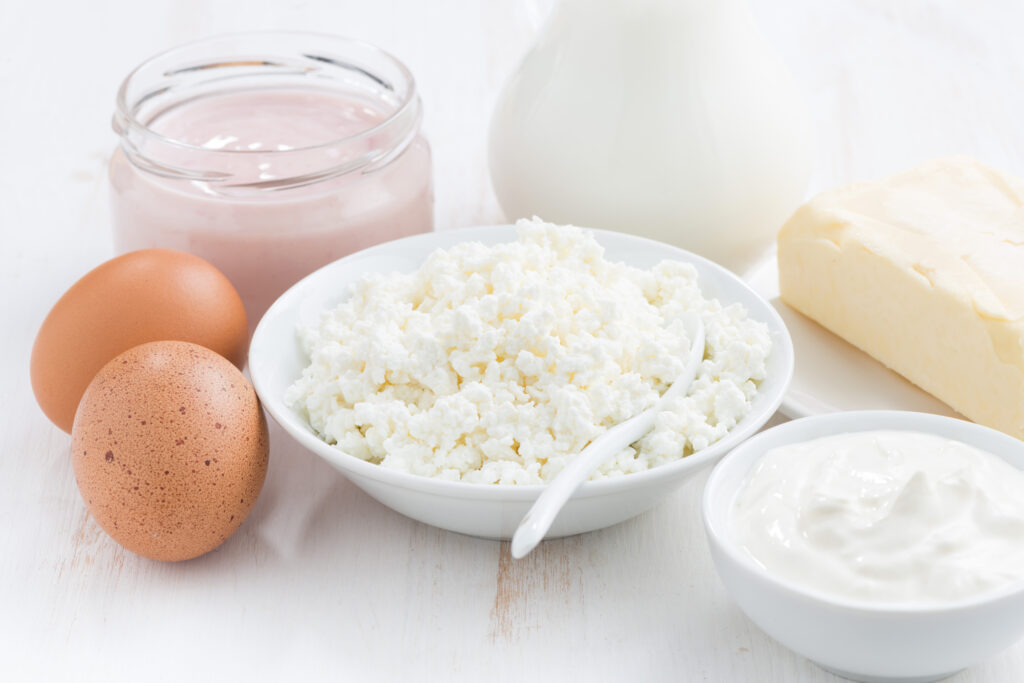
Cottage cheese is generally considered to be the healthier alternative to ricotta, containing fewer calories and a lower fat content. It does need to be well drained before use, however. Skipping this step can mean added water in your pasta dish, which can dilute the sauce and leave things much runnier than intended.
Asiago
This Italian cheese pairs really well with tomato-based sauces and dishes, and usually comes in two types or varieties:
- Asiago d’Allevo – mature, aged.
- Asiago Fresco – young, not matured.
They have slightly different properties, especially in terms of taste. The more matured and aged Asiago cheese has a tangy, strong, bold, nutty flavour but its younger counterpart has a much milder taste to it.
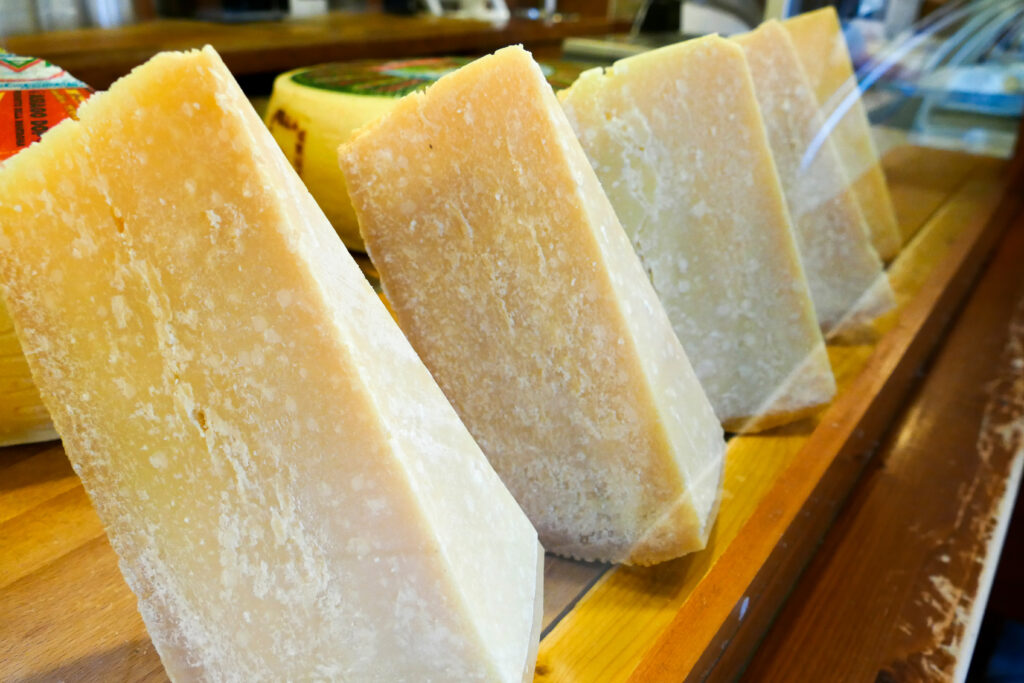
They’re both great for meltability, especially if you’re in the market for a creamy, smooth texture. The older version is a crumbly, hard cheese, and the younger one is less crumbly and softer.
Manchego
Manchego cheese is a Spanish variety, and it’s often considered to be a gourmet or luxury cheese. Just like the other best cheese for lasagnes recommendations on this list, it has a nutty flavour profile, is rich and bold, and pairs the tangy flavour with an umami grass-like hint. In a good way, obviously.
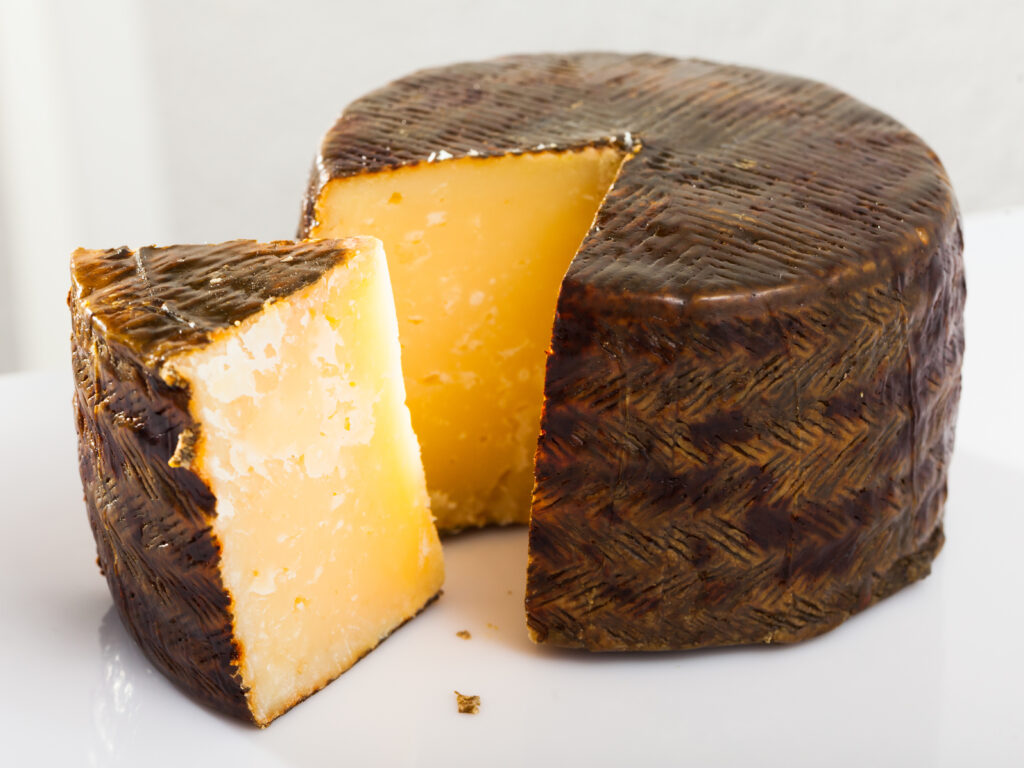
As far as cheeses go, Manchego has an interesting, unique, and complex taste – so you’re probably going to either love or hate it, with no in-between. The good news is, there are different levels of flavour and taste, ranging from young (mild flavour) to mature and extra mature, which pack a serious punch.
Parmesan
This type of cheese has a harder and dryer texture than the likes of mozzarella or ricotta, and it also has a bold, nut-like, savoury flavour. It’s also very authentically Italian, which is why so many love to add it to Italian-based pasta dishes.
Also known as Parmigiano-Reggiano, parmesan doesn’t melt quite as well as the likes of ricotta and mozzarella, but that doesn’t mean it isn’t a suitable cheese for lasagne. The savoury and umami flavours work well with both the minced beef (or other meat) and tomatoes, also adding a crunchy crust and added texture.
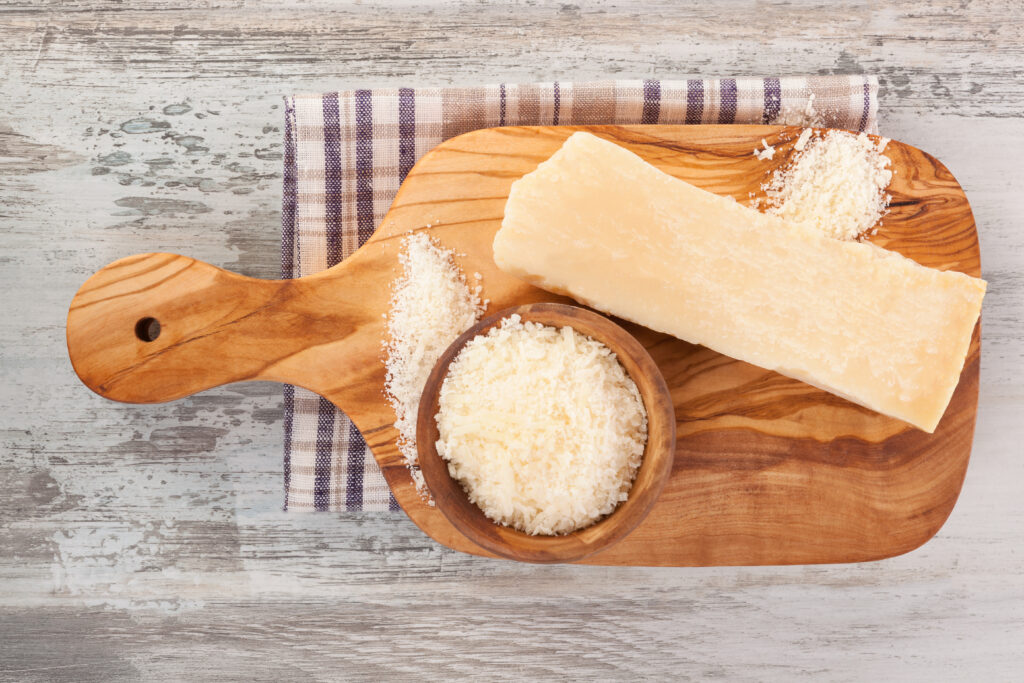
For best results, it’s recommended to opt for a block of parmesan that has been grated over the lasagne dish itself, but you can also use a mixture of pre-grated and fresh for a mix of flavour depths.
Cheese Blend
Some chefs (Italian and otherwise) use a blend of different cheeses to give their lasagne dishes the most flavour and best texture. One example of this is ricotta cheese combined with either mozzarella, parmesan, or cottage cheese.
Mozzarella cheese is also combined with cheddar cheese, sometimes in layers, to combine a creamy cheesy topping with a crunchy, hard one.
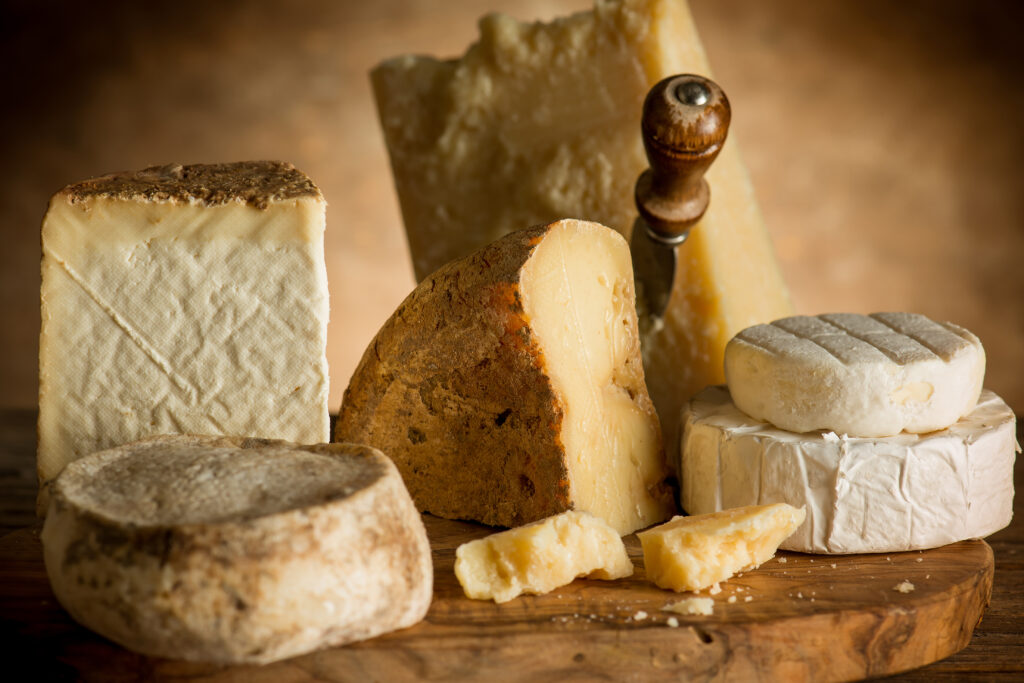
My personal favourite best cheese for lasagne blends is a mix of parmesan and cheddar – but I thoroughly recommend experimenting with different combinations to find the perfect cheese for you and your flavour preferences.
Can You Use Cheddar Cheese Instead of Mozzarella in Lasagne?
Yes, you absolutely can use cheddar instead of mozzarella for this pasta dish.
The two cheeses have differences that you do need to know about, because they’ll impact the finished meal. Cheddar browns and mozzarella doesn’t, for example.
Other differences include:
- Cheddar has a bolder flavour depending on whether you use mild, mature, or extra mature.
- Mozzarella is more subtle in terms of flavour and texture.
- Cheddar doesn’t stretch or become as gooey as mozzarella.
- Mozzarella is served fresh and ‘young’, but cheddar is aged for sharper, stronger flavours.
- Cheddar has a higher fat and calorie content compared to mozzarella.
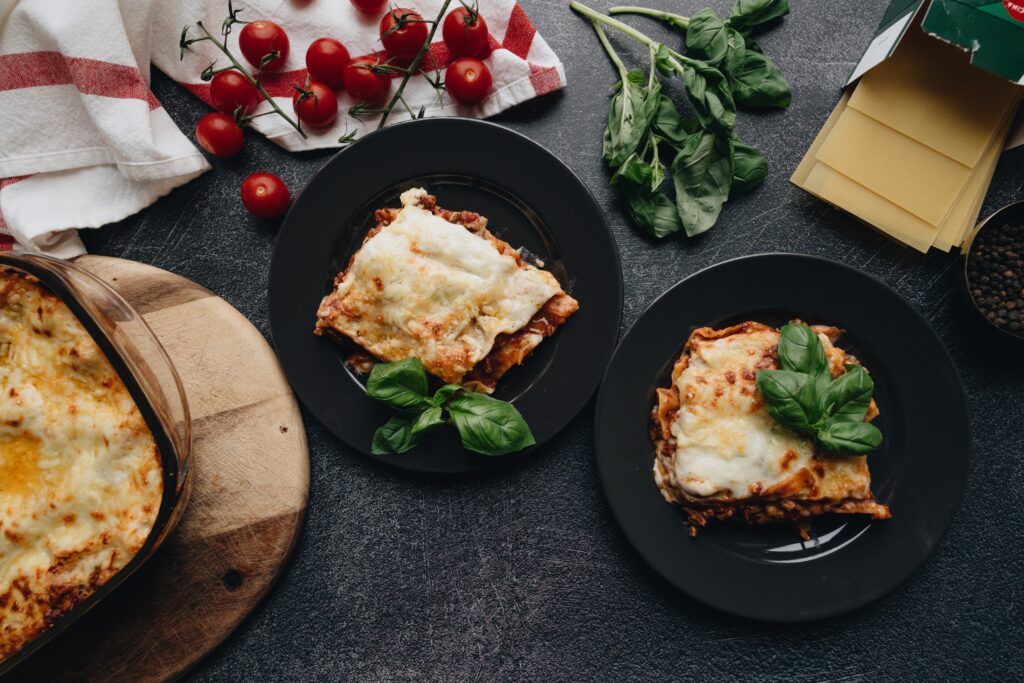
Best Cheese for Lasagne: Conclusion
In reality, your taste, dietary restrictions, and personal choices are huge factors when choosing the best cheese for lasagne. Traditionally, ricotta or a blend including ricotta was used, but the possibilities are endless these days.
Look at the cheese toppings for the ready-made lasagnes (if you buy them) and make note of them. Try them the next time you make lasagne. If you like it, make it more. If you dont, dont. It really is as simple as that. By experimenting, you might find a new favourite best cheese for lasagne.
You might also like:
- What is the UK Equivalent of Pizza Cheese?
- 101 Gifts For Cheese Lovers 2022 Edition
- Can You Freeze Cheese?
